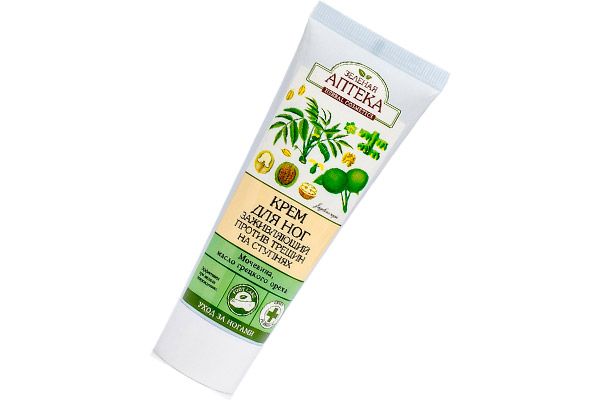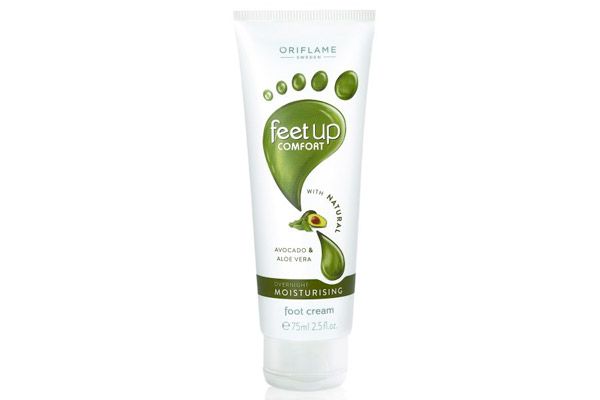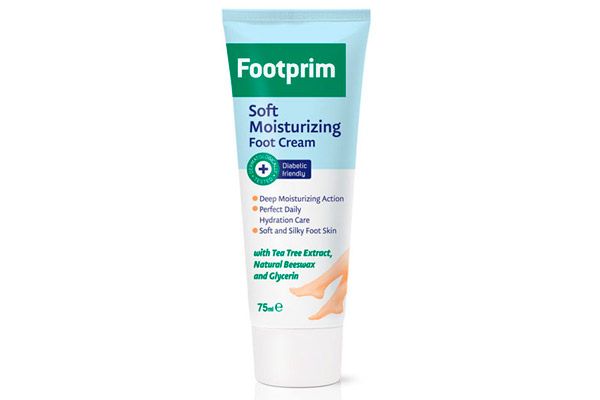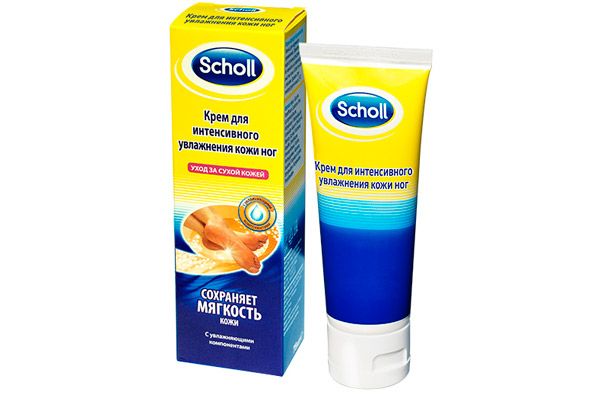Medical expert of the article
New publications
Preparations
Moisturizing foot creams
Last reviewed: 04.07.2025

All iLive content is medically reviewed or fact checked to ensure as much factual accuracy as possible.
We have strict sourcing guidelines and only link to reputable media sites, academic research institutions and, whenever possible, medically peer reviewed studies. Note that the numbers in parentheses ([1], [2], etc.) are clickable links to these studies.
If you feel that any of our content is inaccurate, out-of-date, or otherwise questionable, please select it and press Ctrl + Enter.
Our feet experience significant daily stress – they carry us and, therefore, require careful care, no less than the skin of the face. After all, painful cracks, calluses and corns make our movements a very unpleasant procedure.
Prevention of dry skin on the feet and its subsequent complications is the use of a moisturizing foot cream.
Such a cream should have components that provide proper hydration and nutrition of the skin, prevent its overdrying and its consequences - peeling and cracks. The cream must contain moisturizing and moisture-retaining ingredients, such as natural oils, vitamin complexes, plant extracts, hyaluronic acid and others.
Moisturizing foot cream often contains urea (carbamide). Its presence in the composition has a positive effect on the properties of the cream - it has a powerful moisturizing and moisture-retaining effect, due to which the keratinized layers of the skin are well softened. Urea promotes the regeneration and renewal of skin cells, it is well absorbed by the skin and penetrates deep.
Indications moisturizing foot creams
Indications for use of moisturizing cream: dry and flaky skin, dry calluses, cracks and prevention of such problems.
Release form
Pregnant and breastfeeding women are not contraindicated to take care of their feet, but they should carefully study the composition of the product. For example, cosmetics from Green Mama are positioned as quite safe. In particular, for the skin of the feet, this company offers the cream "Sage and linseed oil", which contains glycerin and stearic acid, urea (carbamide), mint extract, yarrow and sage extracts, flax and sesame seed oil, lavender and cedar essential oils, tocopheryl acetate, camphor - nourishing, softening and moisturizing ingredients. This cream does not contain synthetic fragrances, but it does contain such undesirable components as triethanolamine and parabens, although at the very end of the list.

Available in a 50 or 100 ml tube. Designed for adults with any skin type.
Moisturizing foot cream Shea contains the following active ingredients that determine its properties:
- shea butter – has a softening, anti-irritant effect, provides protection, nutrition and moisture retention;
- rosemary extract – has a tonic and disinfectant effect;
- lavender oil – has antimicrobial, absorbent and healing properties;
- menthol – cooling, soothing and refreshing effect;
- arnica extract – normalizes blood circulation, activates the healing process.

The use of this cream relieves the feeling of heaviness and fatigue, and is a good preventative for the formation of calluses and corns.
Release form: 30 or 150 ml tube, for any age and any skin type.
Healing foot cream against cracked feet (Green Pharmacy) has the ability to quickly eliminate minor damage to the skin of the feet.
Release form: 50 ml tube.

Contains 10% urea - an effective moisturizer, as well as lanolin, allantoin, ß-carotene. Walnut oil, which is part of the cream, in addition to moisturizing, provides the skin with nutrients and destroys pathogenic bacteria. Extracted plantain, fir and tea tree oils refresh and protect against fungal infection.
For adult consumers with any skin type, the application time is universal.
Night moisturizing foot cream Feet Up Comfort (Oriflame) for daily care to prevent irritation, overdrying, and skin damage.

Release form: 75 ml tube.
The cream's moisturizing properties are provided by the presence of urea in its composition; active substances, glycerin and avocado oil, complement this action.
Avocado oil also has regenerating and softening properties.
Aloe vera extract is rich in nutrients – proteins, microelements (calcium, magnesium, zinc), vitamins necessary for the normal functioning of the skin.
Cetearyl alcohol is a good softener for calloused skin and is a mixture of cetyl and stearyl alcohols, which are powerful emollients.
Apply at night, for adult consumers with any skin type.
Lekar foot cream with urea, softening calluses, instantly compensates for fluid deficiency.

Available in a 50 ml tube.
Contains urea, a natural humectant and conductor of bioactive components. Other components soften calluses on the skin of the feet, promote healing of cracks, relieve irritation, fatigue and pain.
Olive oil, rich in vitamins and minerals, nourishes and moisturizes, restoring the skin of the feet.
Celandine and oak bark extracts promote rapid skin recovery, heal cracks and provide a feeling of comfort. Tea tree oil, allantoin and vitamin E soften and protect against bacteria, fungi and free radicals.
Moisturizing foot creams for diabetes
Diabetics almost always have problem skin on their feet, this part of the body requires especially careful care. With elevated glucose levels, the body becomes dehydrated, and the skin suffers first. It becomes thinner, dries out and peels, irritation, cracks and itching may appear. Such skin is susceptible to infection, its protective functions are reduced against the background of general immunodeficiency. Diabetic foot syndrome may occur. To prevent such complications, it is necessary to moisturize the skin of the feet with special moisturizing creams.
The range of foot skin care creams offered is quite wide, but not all of them can be used by patients with diabetes. The ingredients contained in the cream should not include alcohol and salicylic acid, synthetic flavors, preservatives and dyes. You should not use creams based on glycerin, as it is a hygroscopic substance, and at humidity less than 65% it can absorb moisture from the skin.
Moisturizing creams for the skin of the feet in diabetes should provide intensive moisturizing and softening of the skin, preventing its overdrying and keratinization; heal cracks, minor abrasions; have anti-inflammatory, bactericidal and fungicidal effects.
These properties are possessed by the German foot balm Sixtumed Fussbalsam Plus. Prevents the formation of diabetic foot.

It is available in the form of a spray (100 ml), which ensures maximum protection of the contents from contamination during use.
The properties of the cream are determined by its composition. Sage in combination with lavender and clove buds have cleansing, healing, anti-inflammatory and fungicidal properties. Their action is complemented by evening primrose oil, ginkgo biloba leaves and arnica flowers, stimulating the regeneration of skin cells, blood circulation, and protective properties.
Allantoin, synthesized from the root of comfrey, actively eliminates irritation, exfoliates dead skin particles, renewing the skin, and accelerates the healing process.
Vitamin E – improves skin respiration and fights free radicals.
The cream-balm does not contain fragrances, dyes, preservatives or glycerin.
Contraindicated in case of open wounds on the skin, allergies to the components of the cream-balm.
Apply twice a day - in the morning and before bedtime on cleansed skin of the feet and interdigital spaces. The texture of the product does not require rubbing, it is instantly absorbed, no greasy film is formed on the skin.
Diabetics will benefit from the moisturizing foot cream Footprim (Bulgaria) of prolonged action, containing tea tree extract and beeswax. The cream is well absorbed by the skin, after use there are no greasy stains. Tube 100 ml.

Intensive foot moisturising cream (Scholl), containing urea and allantoin, applied two or three times a week, also suitable for diabetics. Tube 75ml.

Unless there are special recommendations, such cream is stored for no more than two years at a temperature of 5-25ºС.
 [ 1 ]
[ 1 ]
Dosing and administration
Before using foot care cream, it is recommended to soften the skin by taking a hot bath. Then remove dead skin particles using tools (pumice, brush, file), additionally using scrubs and peeling agents for greater effectiveness. And only then apply a moisturizing cream to the skin of the feet.
This procedure is usually done before going to bed. You can put special socks on your feet at night.
Contraindications
Moisturizing foot creams are not considered medicinal products, and the only contraindication to their use is intolerance to any of the components in their composition.
Reviews
Reviews of the above-mentioned foot creams are positive, there are practically no dissatisfied ones. If the expectations of consumers are not always met, then the complaints look something like this: "moisturizes, but not enough", or "not as intensely as desired". There are also complaints that the moisturizing effect stops when you stop caring for your feet - no one promised that it would last forever! You need to care for your feet daily or at least every other day, because fighting cracks and keratinization is not worth it.
Attention!
To simplify the perception of information, this instruction for use of the drug "Moisturizing foot creams" translated and presented in a special form on the basis of the official instructions for medical use of the drug. Before use read the annotation that came directly to medicines.
Description provided for informational purposes and is not a guide to self-healing. The need for this drug, the purpose of the treatment regimen, methods and dose of the drug is determined solely by the attending physician. Self-medication is dangerous for your health.

